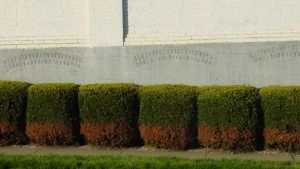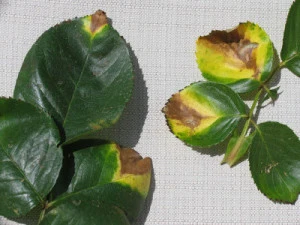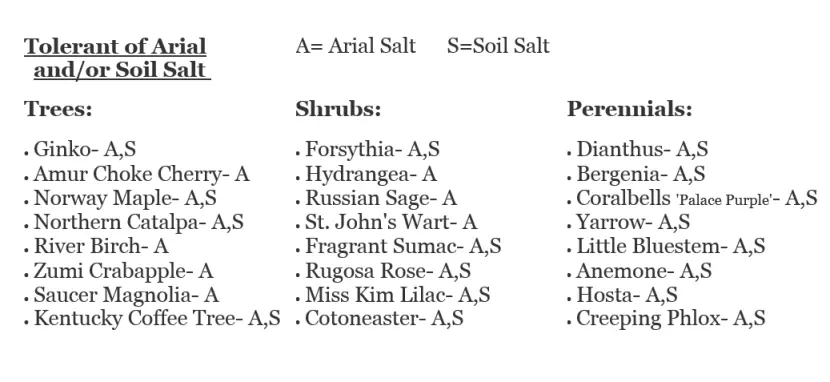 Road runoff contains dissolved salts that not only injure plants directly but also can change the structure of the soil, causing it to become compacted. This condition restricts the nutrients, water,and oxygen available to the plants, putting them under stress. Shoot tips and young leaves usually receive the most damage. One of the salt-damage-bigsymptoms of salt damage is dried, burnt leaf edges.
Road runoff contains dissolved salts that not only injure plants directly but also can change the structure of the soil, causing it to become compacted. This condition restricts the nutrients, water,and oxygen available to the plants, putting them under stress. Shoot tips and young leaves usually receive the most damage. One of the salt-damage-bigsymptoms of salt damage is dried, burnt leaf edges.How do I fix it? Where runoff is unavoidable, flush the area around the plants in early spring by applying 2 inches of water over a two- to three-hour period, repeating three days later. This will leach much of the salt from the soil. If salt spray from the road surface is a problem, use water to rinse the foliage and branches of any affected plants when salt spray is heavy and again in early spring.
 How do I prevent it? Salt burn has a simple solution. Don’t pile snow containing salt around plants or trees or put it where runoff might reach plant roots. Ask road-maintenance workers if they can direct salty runoff away from your property. When selecting species for a new roadside planting, minimize the potential for salt damage by planting salt-tolerant selections. Install a low wall or hedge of salt-tolerant evergreens, which can deflect salt spray away from sensitive plants nearby.
How do I prevent it? Salt burn has a simple solution. Don’t pile snow containing salt around plants or trees or put it where runoff might reach plant roots. Ask road-maintenance workers if they can direct salty runoff away from your property. When selecting species for a new roadside planting, minimize the potential for salt damage by planting salt-tolerant selections. Install a low wall or hedge of salt-tolerant evergreens, which can deflect salt spray away from sensitive plants nearby.Here is a few salt-tolerant plants that are hardy to our area.



Comments (0)
Sorry! The comments have been closed.